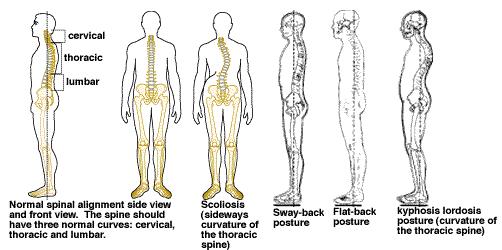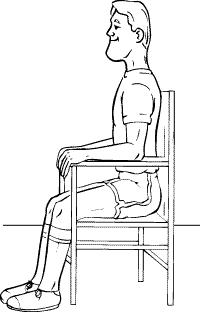How to avoid back pain and other joint pains while doing a sitting job?
All pains including back and other joints are caused due to improper posture while we sit during our job.


All pains including back and other joints are caused due to improper posture while we sit during our job.
Posture is the position in which you hold your body upright against gravity while standing, sitting or lying down. Good posture involves training your body to stand, walk, sit and lie in positions where the least strain is placed on supporting muscles and ligaments during movement or weight-bearing activities. Proper posture:
- Keeps bones and joints in the correct alignment so that muscles are being used properly.
- Helps decrease the abnormal wearing of joint surfaces that could result in arthritis.
- Decreases the stress on the ligaments holding the joints of the spine together.
- Prevents the spine from becoming fixed in abnormal positions.
- Prevents fatigue because muscles are being used more efficiently, allowing the body to use less energy.
- Prevents strain or overuse problems.
- Prevents backache and muscular pain.
- Contributes to a good appearance.

Maintaining proper posture while we sit will help us in avoiding all these problems.
Correct sitting position to follow:-

- Sit up with your back straight and your shoulders back. Your buttocks should touch the back of your chair.
- All three normal back curves should be present while sitting. A small, rolled-up towel or a lumbar roll can be used to help you maintain the normal curves in your back.Here's how to find a good sitting position when you're not using a back support or lumbar roll:
- Sit at the end of your chair and slouch completely.
- Draw yourself up and accentuate the curve of your back as far as possible. Hold for a few seconds.
- Release the position slightly (about 10 degrees). This is a good sitting posture.
- Distribute your body weight evenly on both hips.
- Bend your knees at a right angle. Keep your knees even with or slightly higher than your hips. (use a foot rest or stool if necessary). Your legs should not be crossed.
- Keep your feet flat on the floor.
- Try to avoid sitting in the same position for more than 30 minutes.
- At work, adjust your chair height and work station so you can sit up close to your work and tilt it up at you. Rest your elbows and arms on your chair or desk, keeping your shoulders relaxed.
- When sitting in a chair that rolls and pivots, don't twist at the waist while sitting. Instead, turn your whole body.
- When standing up from the sitting position, move to the front of the seat of your chair. Stand up by straightening your legs. Avoid bending forward at your waist. Immediately stretch your back by doing 10 standing backbends.
This comment has been removed by the author.
ReplyDelete